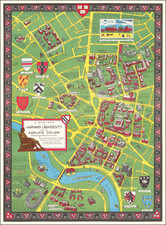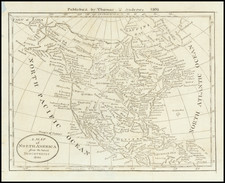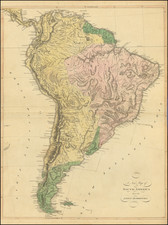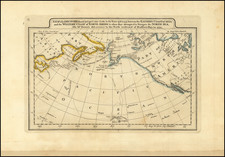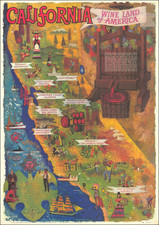First map in is a series of six works, lithographed after Covarrubias's mural the Pageant of the Pacific, which was first displayed at the 1939 San Francisco Golden Gate International Exposition.
Covarrubias was commissioned to create this mural that would be featured in the Pacific House on Treasure Island. Covarrubias and his assistant Antonio Ruiz created the six maps presented for this commission, with subjects regarding the peoples, flora and fauna, art of the greater Pacific region, among other subjects. These murals were a prime example of the importance of Mexican muralists in the United States and were a major attraction at the exposition.
The six maps are:
- Peoples of the Pacific
- The Fauna and Flora of the Pacific
- Art Forms of the Pacific Area
- Economy of the Pacific
- Native Means of Transportation in the Pacific Area
- Native Dwellings of the Pacific Area.
These works all reflect various parts of indigenous and colonial Pacific culture and present a vast amount of information in an attractive format. For example, in the Peoples of the Pacific, Covarrubias informs the viewers about the native dresses of Pacific Islanders. On the main chain of the Indonesian archipelago, the dresses of all the major cultures, seven in total, are shown. The detail is not limited just to the Pacific proper, in the Art Forms of the Pacific, designs on leather made by the Tartar people are shown, as are masks made by the Iroquois in northeastern America. The amount of information presented is only possible due to the artist's extensive knowledge and learning.
Miguel Covarrubias was a renowned Mexican intellectual and artist, interested in the politics of the modern world but also fascinated by pre-Columbian American cultures. This historical interest often seeped into his artistic style, and many of his works were evidently influenced by art from traditional American cultures. This is evident in his present work, which would also have been informed by his extensive travels throughout Southeast Asia. These voyages were funded by several high profile prizes, including a Guggenheim Fellowship.
Covarrubias was perhaps most popular among a general audience for his caricatures, and his work appeared repeatedly in The New Yorker and Vanity Fair. His caricatural style can be seen in certain aspects of the present work.









